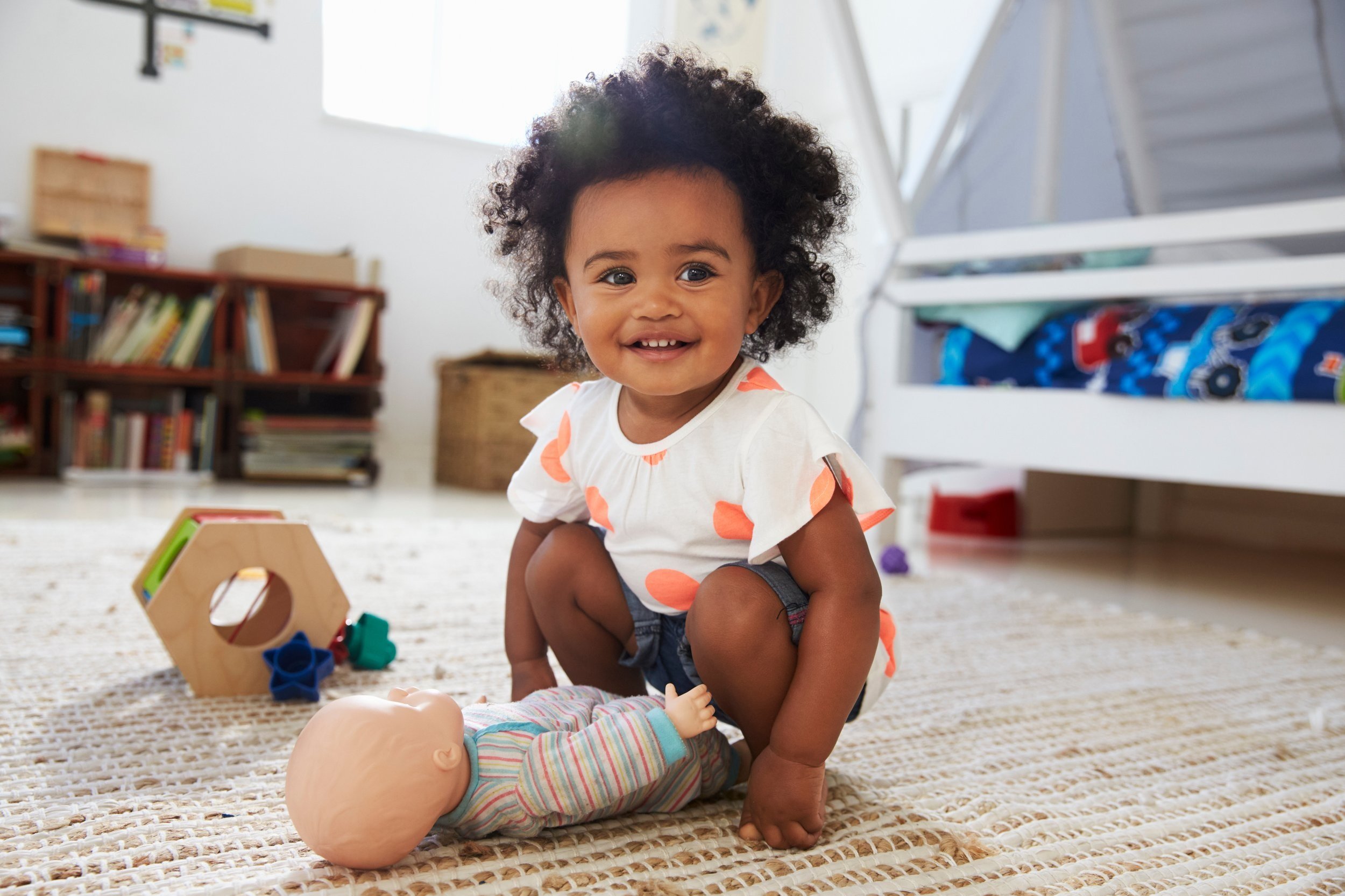At Home Speech & Language Activities - Baby Dolls
A baby doll is a toy that teaches your child about daily routine actions, pretending, self-soothing, social emotional skills and body parts, all in a fun and energetic way. It is a great toy to grow with your child’s skills from Infancy through Preschool and beyond. And it’s honestly adorable to see your child “care for” a baby doll in ways that they are used to being cared for at home.
There are lots of different baby dolls out there, millions I’m sure! For the activities we describe to work it’s important that you find, purchase, or create a doll that has:
Head with facial features (eyes, nose, mouth)
Body
How to Play and What to Say
Not all children are communicating and playing the same way.
Explorers
How to Play:
Your Explorer child is likely to play with a baby doll by mouthing various body parts to feel the differences, such as between a smooth face vs poky fingers vs soft hair pieces. Some small baby dolls also come with a scent such as lavender which is another sensory exploration for your child. They may like to pick it up and throw the doll, or hide it under a pillow. Imitate any actions you see your child doing and enjoying with the baby doll. This will extend the playtime and also give your child a way to play with you and the baby doll.
What to Say:
Focus on sound effects related to the play actions. If you play peek a boo with the doll, use big excited “peek a boo!” words each time. Or if your child likes to throw the baby, you can model “throooow” or “ouch” or “crash”. If your child is mostly mouthing the baby, you can use sound effects like “am am am” (eating sound) or blowing raspberries sound, as you imitate their actions.
Pioneers
How to Play:
Your Pioneer stage child is exploring play through imitation, so model simple actions with the baby doll. Give it a hug, or pats on the back, or kisses. It is great to model actions that your family uses regularly. For example, if your child loves to be tickled, you can model tickling the baby. Use repetition, and each time you have the baby doll out, model these same 1-3 actions, with high energy and animation.
Many children at this stage also begin to connect to a “special item” or a “lovey” as a soothing and comfort item. This may be a baby doll, or stuffed animal or blankie etc. You can also practice these strategies with their special lovey item.
What to Say:
Describe simply what action you are doing with the baby doll. “Oh hi baby! Baby wants hugs…. BIG HUGS!” as you hug and squeeze the baby doll. Or “Baby, are you ready for… tickles!!! Aaaah!” and tickle the baby. If there are words/phrases/songs you often use with your child, for example while playing a tickle game or patting them on the back, use those same words/phrases/songs with the baby doll. Also use sound effects, like in the Explorer stage above.
Builders
How To Play
Your Builder stage child is beginning to expand their play ideas, and beginning to pretend. Use the baby doll to act out familiar actions such as:
Feed the baby (milk or other food)
Put the baby to sleep
Put a blanket on the baby
Change the baby’s diaper
Give the baby pats, back rubs, burps, tickles, hugs etc
Put a hat or clothes on the baby
Put the baby in a stroller/carseat/crib
Using repetition is great! It’s okay to feed the baby milk 15 times before your child if that’s what your child is interested in, and then you can try another action. Or you may cycle through many actions over and over. Repeating the same actions means you can repeat the same key vocabulary terms and phrases, and this will help your child grow their talking skills.
Note: As the play expands and may benefit from add-on items to act out the above actions, keep in mind that you can use realistic toy add-on items (a toy bottle, small blankie etc), or real-life items (a real bottle, a real baby hat etc) or symbolic items (use a block as a bottle, or a paper towel as a blankie etc).
What to Say:
Describe what your child is acting out with their baby, or what you are acting out with the baby doll. Begin to use more descriptors, names of items and basic feeling or emotion words . This is also a great opportunity to naturally practice body parts.
Baby is hungry, she wants more milk. Here, give her bottle, she’s so hungry.
Oh look, she’s tired. Goodnight baby. Shh Shh Shh. Night night.
Ooh it’s cold. Does Baby need a hat? Here’s a hat, put it on her head.
Uh-Oh! Baby fell down and bumped her knee. She’s feeling sad. Give her a kiss and help her feel better.
© 2020-2025. Stephanie Keffer Hatleli, MS CCC-SLP. All Rights Reserved.
The content offered on ToddlerTalk.com is for informational purposes only. Toddler Talk is not engaged in rendering professional advice, whether medical or otherwise, to individual users or their children or families. No content on this site, regardless of date, should ever be used as a substitute for direct medical advice from your doctor, speech language pathologist, or other health professional. By accessing the content on ToddlerTalk.com, you acknowledge and agree that you are accepting the responsibility for your child’s health and well-being. In return for providing you with information related to home speech and language practice, you waive any claims that you or your child may have as a result of utilizing the content on ToddlerTalk.com.

